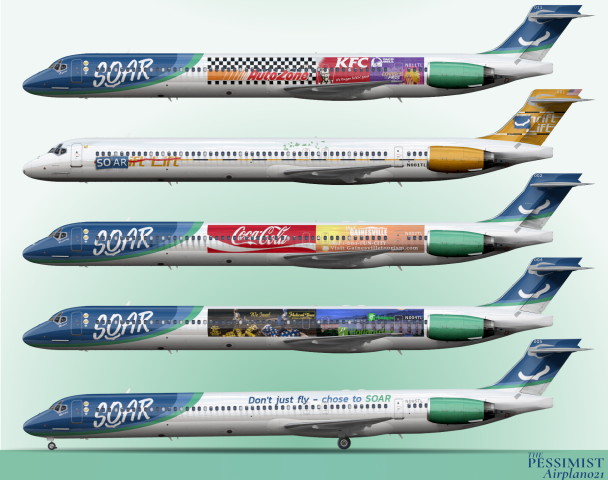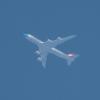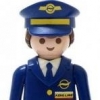
SOAR MD-90s
- Owner: ThePessimist (View all images and albums)
- Uploaded: Mar 16 2022 06:16 AM
- Views: 2,062
- Album The Pessimist One Offs

SOAR, formerly The Thrift Lift, is an ultra low cost carrier based in Indianapolis with focus cities in Baltimore and Daytona Beach. It was founded in 1995 using surplus aircraft which had been retired due to old age and fuel inefficiency. The Douglas family has been the carrier's primary aircraft for its entire life although the carrier has progressed from later DC-9 variants to a current fleet of MD-90s and a sprinkling of MD-87s. The carrier flourished in its early days thanks to its rock bottom fares although the techniques that the carrier employed to allow for these bottom of the market fares ensured that the airline would remain a bottom of the market carrier. Passengers complained about poor service and the FAA repeatedly threatened to pull the company's air worthiness certificate due to maintenance issues.
The FAA's concern about The Thrift Lift's shoddy maintenance program proved the be correct on December 15th, 2012 as a fully loaded MD-82 owned by the carrier, registration N006TL, attempted to land at snowy Pellston Regional Airport. The aircraft's deicing systems had long been known by maintenance staff to function poorly, particularly when temperatures dropped rapidly. The night before the flight, the temperature in Indianapolis, the origin of the flight, had fallen nearly 25 degrees Fahrenheit. That morning, Indianapolis had been as dry as a bone so despite the morning mechanic's note that deicing systems in the left wing were "on the fritz" the plane departed. The mechanic had signed off on the plane without checking its destination. He would later admit that he had assumed that the flight was heading to Florida. Pellston was not dry and the morning of the flight had already reported two inches of snow. Thrifty 1059 departed with 170 passengers and 4 crew on board at 8:25 in the morning. The descent into Pellston required that the plane pass through the heavy cloud layer and snowstorm which still enveloped the area. As the plane descended, the Captain activated the deicing system predicting that ice could build up in the cold wet conditions within and under the dense layer of clouds. What the captain did not know was the "on the fritz" reported in the log meant that all deicing surfaces were functioning except for those systems on the left wing. The heating element on the left wing had been disabled that morning because it was failing and triggering a master caution electrical fault. The system had been wired so that the deicing system did not indicate any fault and so the aircraft continued its increasingly dangerous descent. The pilots had no way of knowing that the left wing was accumulating ice at breakneck pace. 7000 feet above the ground, in the final minutes of the flight, the pilots noticed that the aircraft was beginning to roll as the left wing produced less lift while the right wing continued to operate with normal aerodynamic efficiency. The roll increased at alarming speed as the pilots attempted, unsuccessfully, to counter it. Despite their desperate efforts, the pilots lost control of the aircraft as the roll increased and the plane began to nosedive. To their last moment the pilots were still unsure of what had caused the issue but were still fighting to keep the aircraft aloft. All 174 souls on board perished.
The NTSB recommended that all Thrift Lift services cease whilst the investigation ensued just a day after arriving at the scene. Frantic messages exchanged between the first officer and ATC revealed that the flight crew believed that they had fallen victim to a mechanical failure. Further, many pilots reported after the crash their personal encounters with the maintenance practices, or lack thereof, present within the carrier. Previously, they had been threatened with firing if they spoke out about company practices but they felt emboldened by the investigation and crash. Investigation of these claims certified their veracity. Given the flagrant disregard for regulations and safety culture displayed by airline maintenance staff and leadership, press remarked that it was a wonder that the airline had managed to avoid a major accident for so long. The airline's leadership entered a revolving door phase as criminal and civil prosecutions of the carrier proceeded and the airline teetered on the edge of oblivion. The new board made the decision to purchase tiny Key West Central Airlines which operated a single DC-9-31 on scheduled operations from Key West to Nassau and other tropical destinations. This gave them control of KWCA's air operator's certificate which was not subject to an FAA ground-stop. Before restarting operations, the board also believed that it would be beneficial to shed the now tarnished Thrift Lift branding. Thus, SOAR was born from the ashes of Thrift Lift. Services resumed under the callsign Keylime in March 2013 with a few planes sporting the new SOAR livery whilst most planes featured a rather poorly modified version of the old Thrift Lift branding. By 2015, when the final investigative report was released, SOAR had managed to claw back some form of financial stability. The investigation found that The Thrift Lift had flagrantly violated regulation in pursuit of lower operating costs. Two former managers from the carrier received short jail sentences for criminal negligence later that year. However, the rebranding appeared to be effective because many travelers were already flying with the carrier again before the report was released and the carrier only reported a small decrease in passenger numbers after the report was released.
SOAR struggled through 2015 to the start of the pandemic continuing a slow contraction as its fleet and route offerings shrunk. Despite claims that the airline had improved its safety performance, some reports still suggested that the carrier operated substandard maintenance. The pandemic made the airline's financial headache into a migraine as passenger numbers collapsed. SOAR began a program to sell space on the side of its aircraft as so called "flying billboards" to raise capital. The airline survived the worst of the pandemic and found a boon in increased traffic on its Daytona Beach routes as domestic travel restarted. Today, the airline seems to be relatively stable as it finds its place in the post pandemic market. It seems that few consumers remember the sins of Thrift Lift even though some SOAR planes still wear the livery of their predecessor. The billboard program was a relative success and much of the fleet wears branding for various corporations.

 Sign In
Sign In Create Account
Create Account

















Like it!